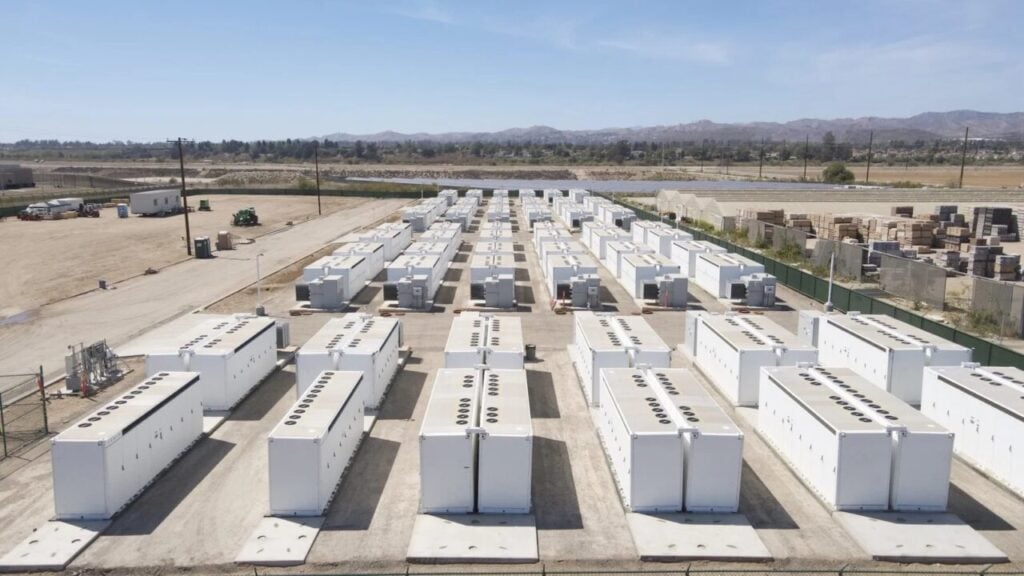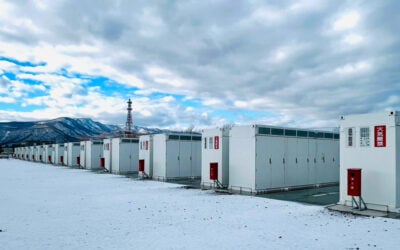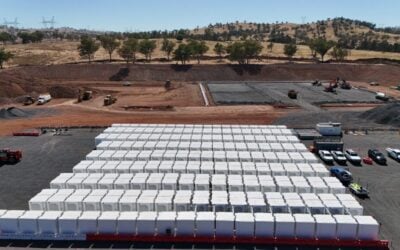
The levelised cost of storage (LCOS) for battery storage in the US has declined enough recently to offset increases between 2021 and 2024, according to Lazard.
Investment bank and financial advisory Lazard has just published the 2025 edition of its annual levelised cost of energy (LCOE) analysis report.
The LCOE report is now in its 18th year, and this edition finds that renewable energy is the most cost-competitive form of generation on a dollars-per-megawatt-hour unsubsidised basis against gas, nuclear, and coal.
You can read key takeaways from the LCOE report from sister site PV Tech, including the impact of the investment tax credit (ITC) incentives on standalone solar PV and solar-plus-storage technologies in utility-scale and commercial & industrial (C&I) market segments.
Try Premium for just $1
- Full premium access for the first month at only $1
- Converts to an annual rate after 30 days unless cancelled
- Cancel anytime during the trial period
Premium Benefits
- Expert industry analysis and interviews
- Digital access to PV Tech Power journal
- Exclusive event discounts
Or get the full Premium subscription right away
Or continue reading this article for free
For energy storage in 2025’s analysis, Lazard said there have been “notable declines” in the LCOS of utility-scale and commercial and industrial (C&I) battery energy storage systems (BESS).
Key drivers for those declines include market dynamics such as the lower-than-expected demand for electric vehicles (EVs) leading to oversupply of battery cells, and technological advances in areas including energy density and increasing cell capacity.
Increasing cell sizes and more energy-dense BESS containers were also cited as key drivers of declining costs by BloombergNEF in its analysis of global BESS costs at the beginning of this year (Premium access).
Lower costs are meeting higher electricity prices in several regions of the US, driving energy storage adoption in states where municipal utility procurement of electricity and data centre growth are prevalent, Lazard said.
This is a change from previous years where activity was primarily limited to independent system operator (ISO) and regional transmission operator (RTO) wholesale markets in which battery storage could compete.
Lazard’s 2025 analysis found LCOS for a 100MW utility-scale standalone BESS with 2-hour duration to range between US$129/MWh and US$277, and for a 4-hour duration 100MW project of between US$115 and US$254.
For C&I standalone BESS (1MW, 2-hour), the cost ranged from US$319/MWh to US$506.
In the 2024 edition, LCOS for a 100MW/400MWh unsubsidised standalone BESS had ranged from US$170/MWh to US$296.
ITC impact
However, those costs are without accounting for the investment tax credit (ITC) and as found by the investment bank in its 2024 edition of the report, the ITC has had a transformative impact on LCOS.
As can be seen in the chart below, the ITC brings down the cost significantly, with 100MW, 4-hour utility-scale standalone energy storage ranging from US$83/MWh if deployed in areas designated as ‘energy communities’ (regions with economies historically dependent on coal and other conventional energy technologies) up to US$192/MWh at the top end.
The chart, prepared for us by PV Tech news editor Jonathan Tourino Jacobo, also includes the levelised cost of energy modelling for hybrid solar-plus-storage and wind-plus-storage plants.
The future of the ITC is, of course, currently in the air. Its fate lies with what happens next to the tax budget reconciliation dubbed the ‘One, Big, Beautiful Bill’ by the Trump administration. A version which passed the House of Representatives to the Senate in late May would have ended the incentive scheme much earlier than the 2032 phaseout date set when the Inflation Reduction Act (IRA) was signed into law by Donald Trump’s predecessor, Joe Biden, in 2022.
However, Senate Republicans now need to debate the bill and agree on what will be included in the version that goes to the president’s desk to be signed, perhaps as early as 4 July, but likely in the third quarter.
The latest draft proposal to emerge from the Senate Finance Committee, which focused on areas relating to taxation, appeared to preserve the ITC for energy storage but end it abruptly for solar PV and wind.
Another major factor in assessing where costs of BESS might go in the future is the potential impact of US import tariffs. While again, the policy direction to be taken on tariffs has not yet arrived at its final position, Energy-Storage.news recently reported analysis from Clean Energy Associates (CEA) and Wood Mackenzie Power & Renewables that found tariffs could significantly increase BESS costs and make decision-making more difficult.
Wood Mackenzie modelled potential rises in utility-scale BESS costs of between 12% and 50% through three scenarios, while CEA said Chinese OEMs that import the vast majority of products used in US BESS projects might be able to absorb tariffs to a point.
However, restrictions on using material assistance from certain prohibited foreign entities (PFEs), of which China could be one, as included in the reconciliation bill text, could throw a further set of challenges into the market.





